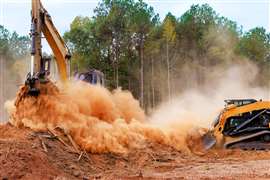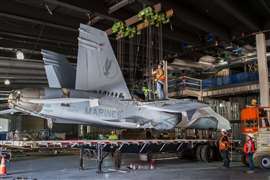Tower crane revision
25 April 2008
Since its publication in 1989, British Standard 7121 - Code of Practice Safe Use of Cranes, has become the UK benchmark for best practice in lifting with cranes. The Standard was published in a number of parts over a period of time with Part 5, covering tower cranes, first published in 1997. Since 1989 much has changed - crane design has advanced, new methods of use have been devised, the awareness of risk has increased and ever higher standards of safety are required by both legislation and public perception.
As a consequence, standards and codes of practice become dated and require revision to ensure that they provide effective guidance on current practice in industry. This is a continual process and the British Standard committee responsible for cranes, MHE/3, has been actively engaged in this with the result that a revision to Part 2 - Inspection, thorough examination and testing was published in 2003, a revised Part 1 - General appeared earlier this year (see IC April 2006, page 48) and, at the beginning of May, a full revision of Part 5 - Tower cranes was published.
The revision of Part 5 was driven by three main factors: firstly, changes in legislation, including the introduction of the Lifting Operations and Lifting Equipment Regulations (LOLER); secondly, changes in tower crane operating practices; and thirdly, the need for more detailed guidance on the management and execution of the installation process.
A particular focus here was the climbing of tower cranes, highlighted by the fatal accident at Canary Wharf in London in May 2000. The UK Health and Safety Executive (HSE) investigation of this incident identified a number of issues, both in broad principles and details, concerning tower crane installation activities. As a consequence, HSE drew up a discussion document, inviting comments on these issues, which was widely circulated among tower crane manufactures, owners and users. The results of this consultation were made available to the British Standard Crane Committee and formed a significant part of the input into the drafting of the revision.
The result of all this has been the production of a document, which has grown in size from 18 to 96 pages and, unlike the previous version, does not require constant reference to other parts of BS 7121 during reading. This increase in size is due, in part, to the inclusion of much general information from Part 1 and also to the addition of new material, particularly in Clauses 12 and 13, which deal in detail with erection, dismantling, alterations and climbing.
Throughout the document there is much emphasis on the need for all operations to be effectively planned and for the work to be carried out by people who have been fully trained and assessed as competent. As part of the planning process detailed method statements should be prepared from rigorous risk assessments, to ensure that all hazards have been fully evaluated and appropriate control measures put in place.
It is impossible to detail all the additions and changes to the Standard in a short article but some that will be of particular interest to owners and hirers of tower cranes are that:
• Arrangements should be made for the rescue of personnel from tower cranes both in the case of medical emergencies and where persons are suspended from fall arrest systems.
• Fire extinguishers are no longer recommended for tower crane cabs as the confined space exposes the user to the risk of suffocation.
• It is essential that tower cranes are fitted with anemometers or other wind-speed monitoring devices.
• Anti-collision devices are recognised as a useful aid to the crane operator on a multi-crane site but “should not be relied on exclusively in place of a primary safe system of work, including the crane coordinator, operator vigilance and crane-to-crane communication using anti- collision radios.”
• Specific guidance is given on lightning protection, in addition to the reference to specific British Standards given in the previous edition of Part 5.
• The issue of working hours for tower crane operators is tackled, with guidance given on the minimum number of operators required for continuous single shift operation of a given number of tower cranes on a site.
This brief summary has only highlighted some of the changes in the revised Standard and I would strongly urge anyone with an interest in the safe installation and use of tower cranes to obtain and carefully read a copy of the complete document. It could save someone's life. •




